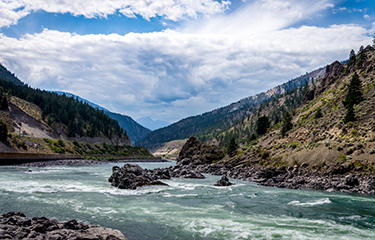Just 56,000 salmon have cleared Fraser River landslide

Some 56,000 salmon have been able to migrate past the landslide in the Fraser River in British Columbia, according to The Star.
The federal and provincial governments are still working on ways to clear the landslide and use other methods to allow the fish to reach their spawning ground. A typical run sees millions of salmon making their way up the Fraser River to various spawning grounds in the region.
According to Michael Crowe of the Department of Fisheries and Oceans, some 12,000 salmon have been able to swim upstream using channels created by blasting and 44,000 salmon have been flown by helicopter. Beginning in July, workers from the British Columbia Ministry of Forests, Lands and Natural Resource Operations began trapping the fish in holding pools and then transferring them into oxygenated aluminum tanks to be lifted by helicopters just two miles past the slide site. Radio tags were also inserted into the fishes’ stomachs to track their journey upstream.
Efforts to move fish by truck have been stalled because the landslide is in a remote location where the roads are “very rough.”
The fish are being radio tagged as well. 276 sockeye and 162 chinooks have been tagged. Although 17 radio-tagged chinook salmon have made it past the blockage on their own, no tagged sockeye have been tracked passing the blockage on their own.
A crew of 180 are working to help move the salmon upstream, piloting boats and helicopters, and using ground vehicles and heavy equipment.
The Fraser River, which sees millions of fish annually swimming inland to spawn, was blocked in an area some 250 miles upstream near Lillooet, British Columbia. The river produces more chinook salmon than all of Puget Sound’s rivers combined. Scientists believe the slide actually occurred last November but because it was in such a remote area, it was not detected until this June, when it was seen using satellite imagery.






Share